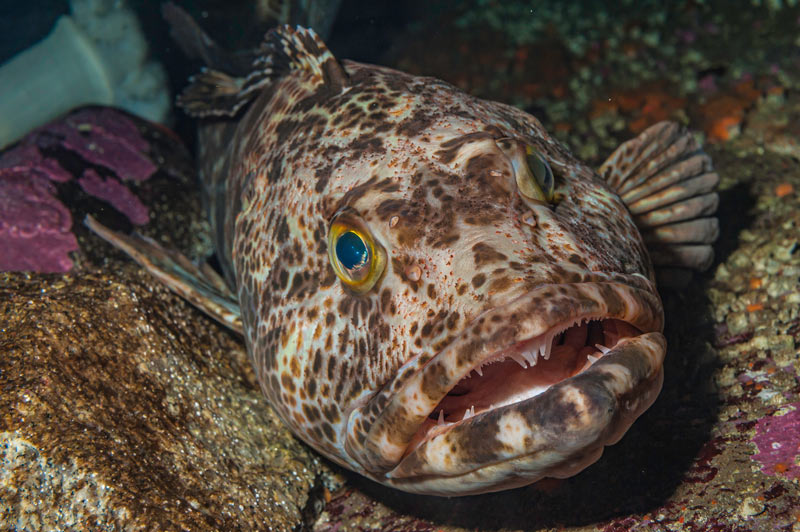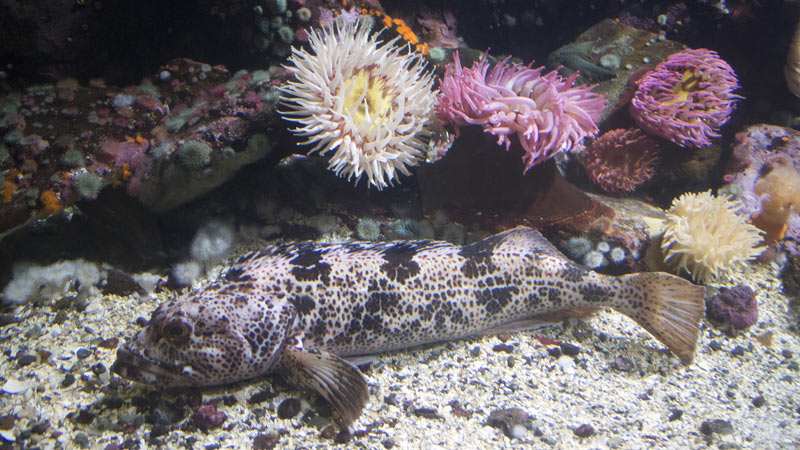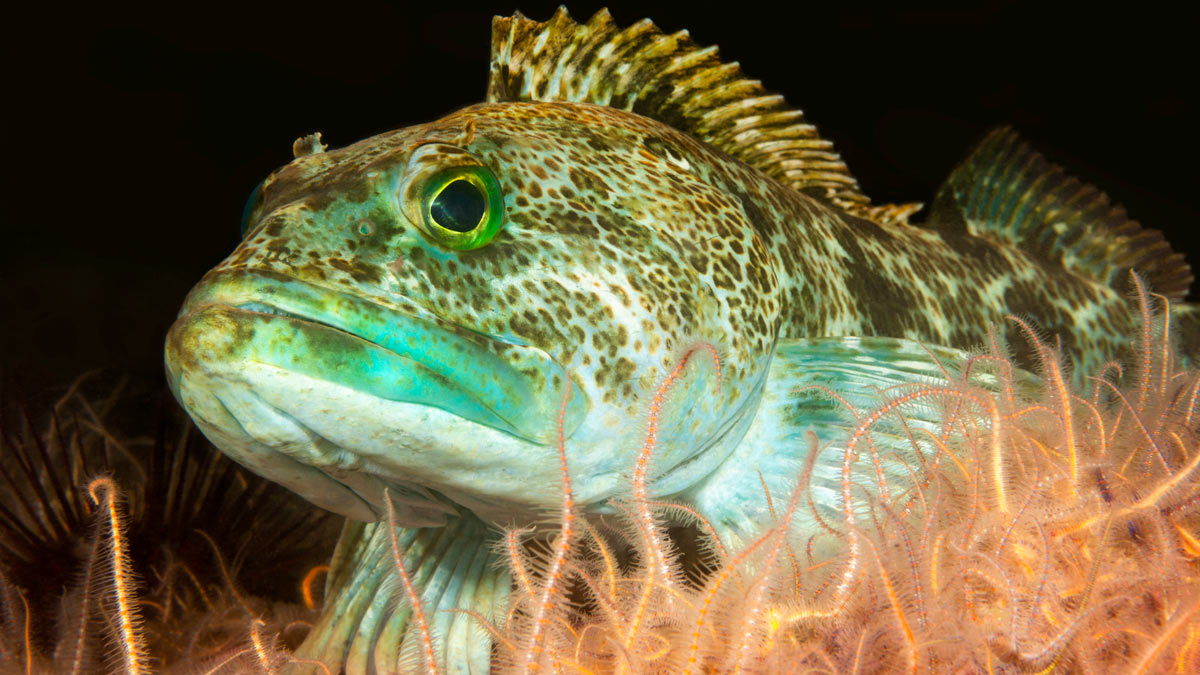One of the west coast’s laziest and most sought-after fish is the “buckethead,” a moniker given to the lingcod for its disproportionately large, prehistoric-looking head and wide, toothy mouth. Do not be fooled by their silly nickname and propensity for resting in dark holes — lingcod are aggressive ambush predators capable of cannibalism.
The lingcod’s scientific name, Ophiodon elongatus, appropriately means “elongated snake tooth.” Lingcod are the largest of the greenling family Hexagrammidae. Aliases include cultus cod, blue cod, green cod, buffalo cod and white cod. These names are a bit of a misnomer; lingcod are not actually cods.
Though these fish can grow to lengths of 60 inches and weigh over 80 pounds, they easily camouflage into their surroundings. The species sports unique color variations: their colors range from gray to reddish-brown to a bright blue-green with copper-colored spotting.

Lingcod have 18 razor-sharp teeth.
Lingcod are found in Pacific waters from Alaska to Baja California. If you encounter a lingcod on a dive, it is most likely a male. Males tend to make shallow waters home, favoring rocky ledges, pinnacles and strong currents (to bring them prey…these lazy bubbas love to eat). Females prefer deeper waters and can be found up to 330 feet deep.
Winter is spawning season. Beginning in October, males set up shop in the rocky substrate (though they rarely travel far — lingcod lack a swim bladder and are a nonmigratory species). The females make their way to the nesting grounds several weeks later and leave as soon as they deposit eggs. Female lingcod can produce anywhere from 60,000 to 500,000 eggs during mating season, with the egg mass weighing up to fifteen pounds. The male is tasked with safeguarding the nest for the eight-to-ten-week incubation period and may watch over multiple nests simultaneously. They will aggressively defend the egg mass against predators, including rockfish and crabs; they’ve even been known to attack humans during spawning season. The eggs will be eaten almost immediately if the male dies or is chased away from the nest. (Be mindful of this if you come across lingcod guarding their nests.)
The eggs will hatch from early March through late April if they survive the incubation period. Larvae feed on zooplankton until they are large enough to settle into kelp and eelgrass beds, around late May or June. Eventually, the young fish relocate to flat, sandy or muddy areas before heading to their rocky homes.

The lingcod is a lazy fish; it spends considerable time laying on its belly.
Young lingcod prey on crustaceans and smaller fishes. The adult lingcod is not a picky eater. It uses its 18 razor-sharp teeth to eat anything it can fit in its mouth — even other lingcod.
Lingcod are a popular spearfishing catch. Since they spend most of their time hiding in holes and crevices among rocks, a small but powerful dive light is a necessary tool for scouring the reef. Though lingcod tend to be lazy and motionless, you might find one following you to investigate your haul.
While most lingcod have a white flesh, some look like they have been soaked in a blue-green food dye. This extreme variance in shade of flesh is still a mystery to scientists. The brightly colored fillets, though bizarre looking, are harmless and turn white upon cooking. Lingcod have a mild flavor and make for mouth-watering beer-battered fish n’ chips.
Lingcod are a federally managed groundfish species. Divers may hunt lingcod year-round, though some marine protected areas (MPAs) and conservation areas restrict take. The catch limit is two lingcod per day, and they must be over 22” long. Visit bit.ly/CADFW-groundfish-regs for information on regulations and restrictions.










